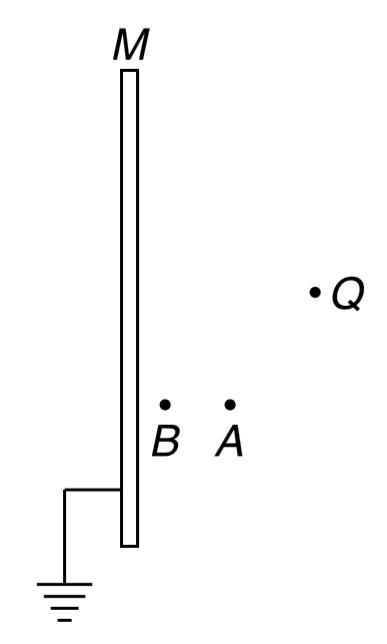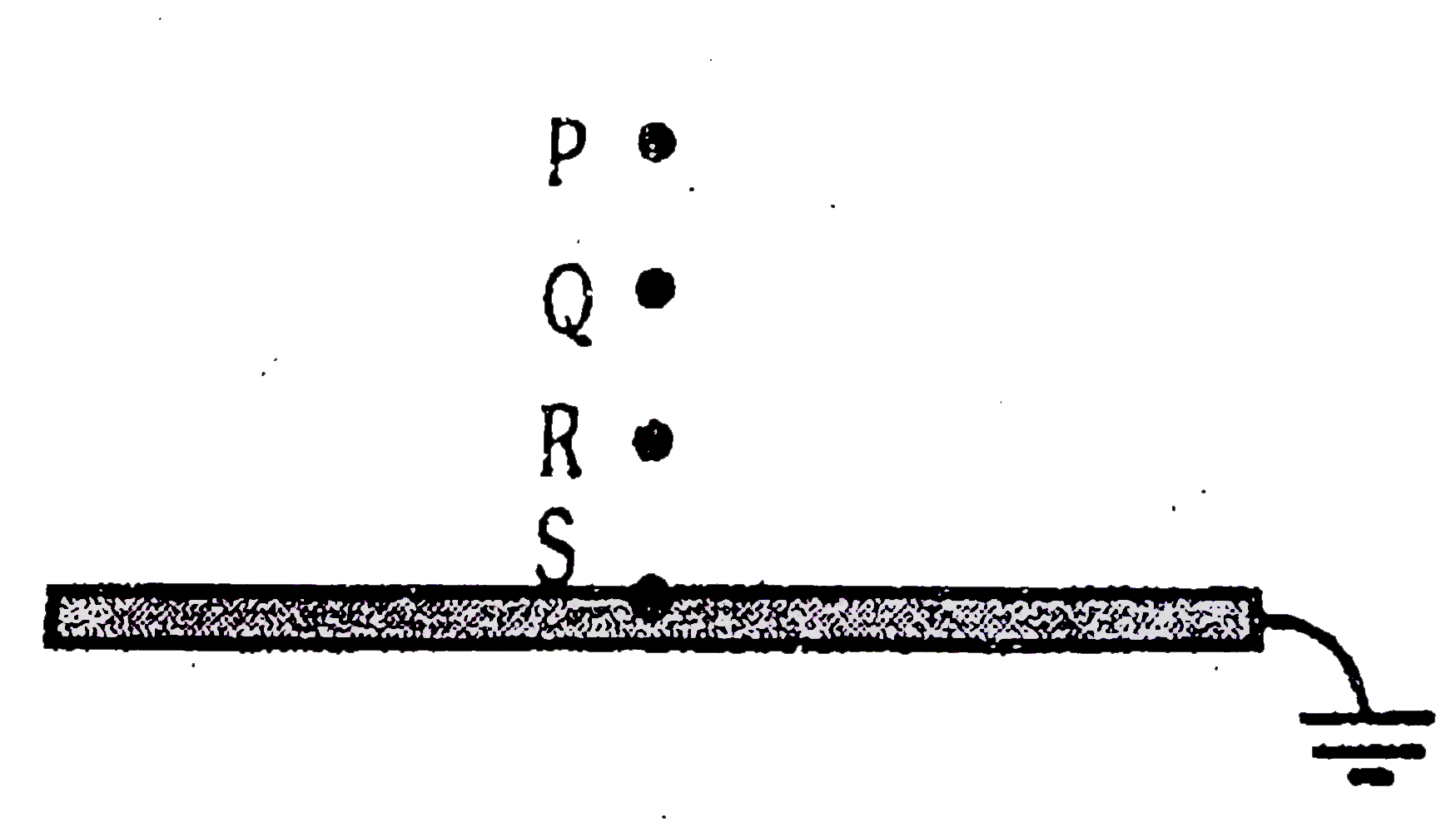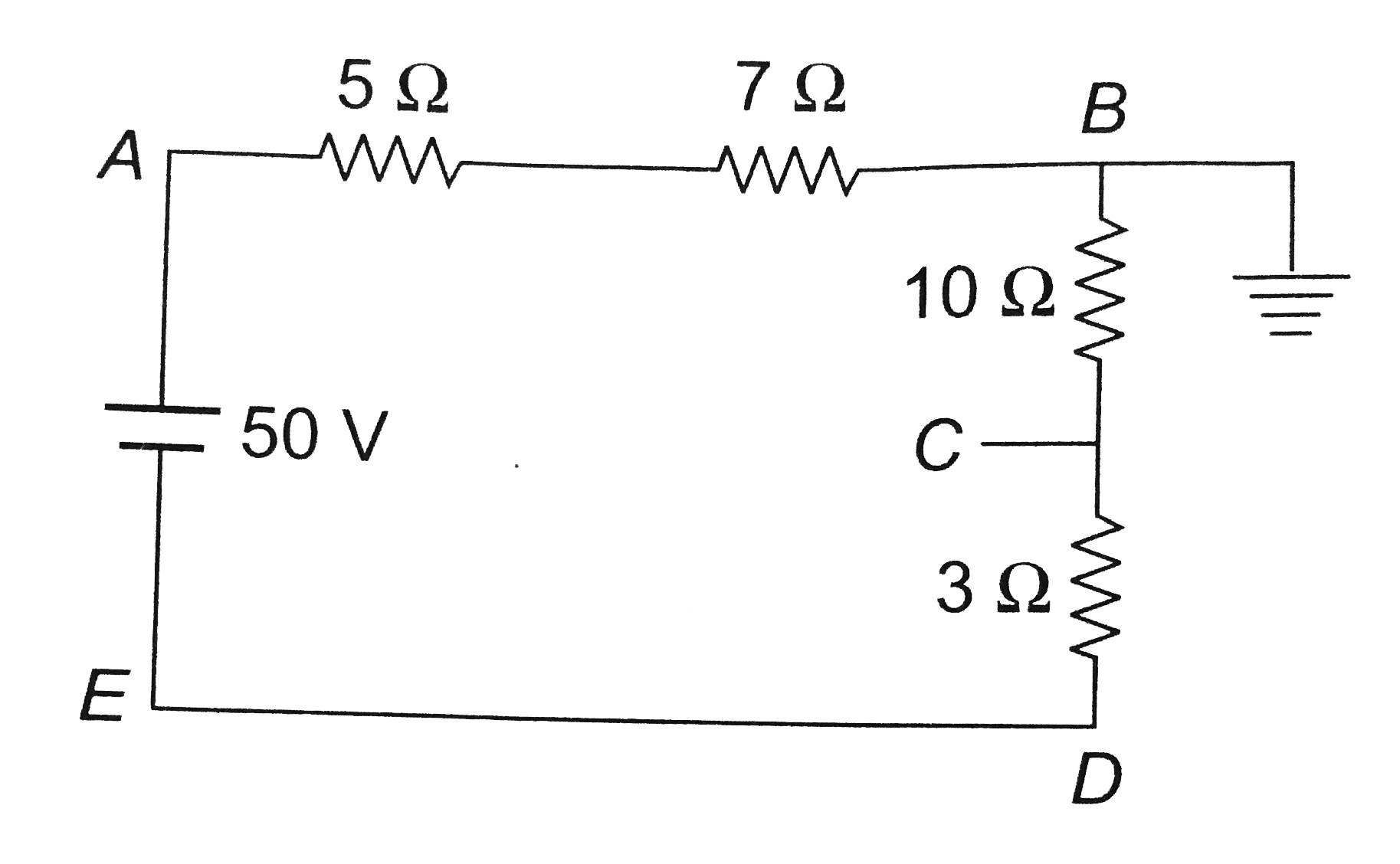A metal plate M is grounded. A point charge + Q is placed in front of it. Consider two points A and B as shown in fig. At which point (A or B) is the electric field stronger? At which point is the potential higher?

The correct Answer is:EA>EBVA>VB
Step by step video, text & image solution for A metal plate M is grounded. A point charge + Q is placed in front of it. Consider two points A and B as shown in fig. At which point (A or B) is the electric field stronger? At which point is the potential higher? by Physics experts to help you in doubts & scoring excellent marks in Class 12 exams.
Updated on:21/07/2023Topper's Solved these Questions
- ELECTROSTATICSBook:ARIHANTChapter:ELECTROSTATICSExercise:Level 2
Explore 77 Videos
- ELECTROSTATICSBook:ARIHANTChapter:ELECTROSTATICSExercise:Level 3
Explore 59 Videos
- ELECTROMAGNETIC INDUCTIONBook:ARIHANTChapter:ELECTROMAGNETIC INDUCTIONExercise:Level 3
Explore 12 Videos
- GEOMETRICAL OPTICSBook:ARIHANTChapter:GEOMETRICAL OPTICSExercise:Level 3
Explore 9 Videos
Similar Questions
Knowledge Check
Charges +2Q and −Q are placed as shown in figure. The point at which electric field intensity is zero will be
 ASomewhere between −Q and +20BSomewhere on the left of −QCSomewhere on the right of +2QDSomewhere on the right bisector of line Joining−Q and +2Q
ASomewhere between −Q and +20BSomewhere on the left of −QCSomewhere on the right of +2QDSomewhere on the right bisector of line Joining−Q and +2QA positive point charge is placed at P in front of an earthed metal sheet S.Q and R are two points between P and S as shown in the diagram. If the electric field strength at Q and r are respectively EQ and ER, which one of the following statement is/are false?
 AER=0BEQ=ERCEQ>ERDEQ<ER
AER=0BEQ=ERCEQ>ERDEQ<ERTwo charges +Q and −2Q are located at points A and B on a horizontal line as shown below
The electric field is zero at a point which is located at a finite distance
 Aon the perpendicular bisector of ABBleft of A on the lineCbetween A and B on the lineDright of B on the line
Aon the perpendicular bisector of ABBleft of A on the lineCbetween A and B on the lineDright of B on the line
Charge 2Q and −Q are placed as shown in figure. The point at which electric field intensity is zero will be somewhere

View SolutionA point charge Q is placed at the point O as shown in Fig. Is the potential difference (V)A−VB) positive, negative or zero if Q is (i) possible (ii) negative ?

View SolutionWhen a 2μC charge is carried from point A to point B, the amount of work done by the electric field is 50μJ. What is the potential difference and which point is at a higher potential ?
View SolutionAt which point (or points) in the given figure is the electric field zero N/C for the two point charges shown on the x axis ?

View SolutionIn the circuit shown, the point B is earthed. The potential at the point 'A' is

View Solution

